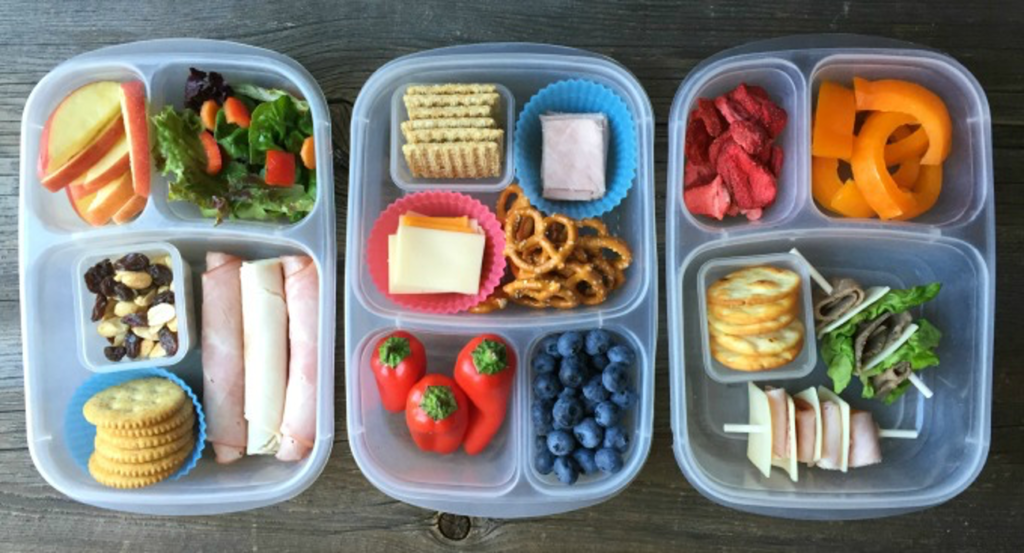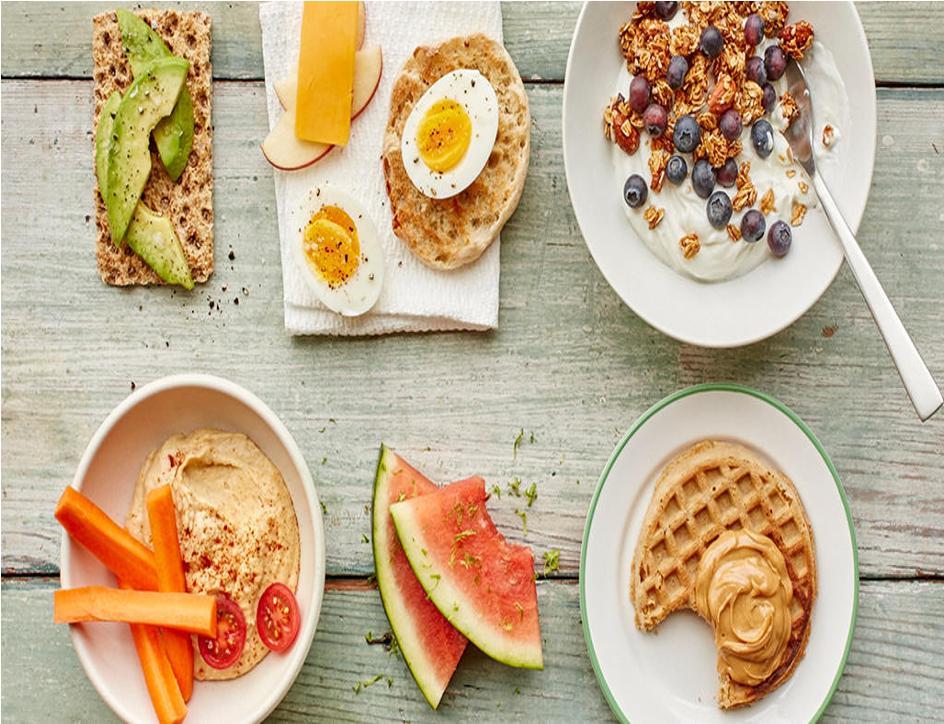The school bell has rung for fall 2020 and kids and adults are looking for simple ways to get back in the groove and fuel in a hurry! And that’s more than just a brown-bag lunch, it really includes a protein packed breakfast, a nutrient-rich lunch and snacks to keep you energized throughout the day! Sounds like a lot, huh? The truth is, it doesn’t have to be! Here are 5 simple back-to-school tips that will help!
Get Back to the Basics
While nutrition can seem overwhelming, a few basic strategies can help you score straight A’s in class! Your goal is to get in as many of the food groups as possible throughout the course of the day! And not just get them in, but get the most quality versions as possible!
- Grains – The grain food group is what your body uses the most for energy throughout the day and to fuel your workouts. Grains include foods like breads, rolls, wraps, cereals, pasta, rice, crackers, oatmeal, quinoa, etc. Whole grain varieties are the best options to choose as they have more fiber and nutrients than refined grain products and give you sustained energy throughout the day!
- Protein – Protein should be included at all meals and snacks because it helps you get full faster and stay full longer! Plus, it helps stabilize your energy levels throughout the day! Protein foods can be animal proteins (meat, poultry, seafood, eggs), vegetable proteins (beans, lentils, nuts, seeds and nut butters) and soy products. Dairy products also contain protein. Lean proteins, such as lean ground beef, top loin, tenderloin, skinless chicken breasts and fish, are the best options as they are lower in saturated fat.
- Fat – When it comes to fat, your goal is to include more of the “good fats” such as nuts, seeds, nut butters, olive oil, avocado, and fatty fish. Try to limit the “bad fats” such as fried foods, pastries, creamy sauces and dressings, etc.
- Dairy – Dairy foods can be included as a part of snacks or included in meals. Dairy products like milk, cheese and yogurt have essential nutrients for health, such as calcium, vitamin D and phosphorus, which help to build and maintain strong bones. Plus, they provide protein!
- Fruit and Vegetables – Fruits and vegetables should cover a lot of your plate at lunch and dinner and can be included in snacks throughout the day. This food group provides important vitamins and minerals that are essential to your body’s daily functions, health and recovery from exercise. The different colors of fruits and vegetables contain different properties called antioxidants and phytochemicals, which can help fight off disease and keep you healthy year-round! The goal is to get in as many colors as possible!

Power the Morning with Protein
If your grandma told you breakfast was the most important meal of the day, she was right! This meal kicks off your energy for the day! People who skip breakfast usually end up with low energy and often crave less nutritious foods later in the day. So, the goal is to pair protein with high-fiber carbohydrates in the morning. Protein helps you get full faster, stay full longer and helps you feel satisfied. Even if you are in a hurry, looks for ways to get in a pop of protein!
Quick ways to add protein for a power-packed breakfast:
- Add peanut butter to your toast, bagel or oatmeal and pair with milk or yogurt
- Glass of low-fat milk paired with an English muffin breakfast sandwich with egg, cheese and lean meat
- Smoothie with low-fat milk, yogurt, honey, banana and berries
- Make egg muffin cups on the weekend so they are ready to go each morning and pair with whole grain cereal and milk
- Go non-traditional: Add a low-fat string cheese to a granola bar and nuts

Brown Bag Twists
More kids, AND adults, than ever will be taking their lunch this fall! So, instead of getting bored of the same thing every day, think of ways to twist it up! Here’s the syllabus for lunch:
- 1-2 whole grains (whole wheat bread/wrap, crackers, granola bars, pretzels, etc.)
- 1-2 proteins (lean meat, chicken, cheese, yogurt, peanut butter, nuts)
- 1-2 fruits and/or vegetables (raw veggies, veggies on a sandwich, fruit, apple sauce, berries in yogurt)
- 1 dairy (milk, yogurt, cheese, cottage cheese)
- Fluid like water, a low-calorie juice or low-fat milk
Try using a bento box to shape your plate – each section should be a different food group! This is a great way to mix and match your favorite lunch items to prevent brown bag boredom.

Pack More than Just Lunch
Nutrient-rich snacks are key to maintain energy levels throughout the day, help fuel your kids through afternoon sports and extracurricular activities, as well as keep you from being so hungry at dinner time. The goal is to have a carbohydrate plus protein to satisfy you. That could look like yogurt and fruit if you have a lunchbox or a granola bar and beef jerky if it needs to be in a backpack or desk. Here is a snack cheat sheet:
- Peanut butter on whole grain crackers
- Veggies and whole wheat crackers with hummus
- String cheese with apple
- Half turkey or tuna sandwich on whole grain bread
- Protein bar with carbohydrates and protein
- Greek yogurt with one-fourth cup granola
- Hard-boiled egg and a granola bar
- Almonds, string cheese, fruit
- Homemade energy bites

Don’t Forget Your Homework
To be successful in class or at work, you have to come prepared. If you wait until the last minute to cram for a test or plan for a work project, you likely won’t do as well or will have to take shortcuts. The same is true for nutrition, if you don’t plan and decide on the fly, it is less likely you will make the best choice and pass the test – so, do your homework!
On the weekend, think in advance what meals and snacks you will have for the week, grocery shop and do a little prep work. An hour or two on the weekend can make a week of eating much easier, much healthier and less stressful! Fueling on-the-go doesn’t have to be difficult or unhealthy, but it takes a little homework to do your best!

